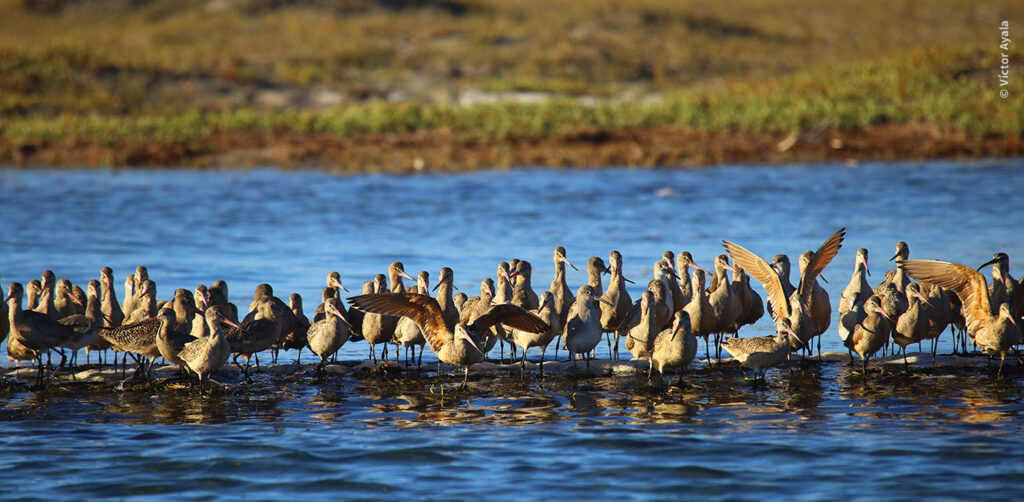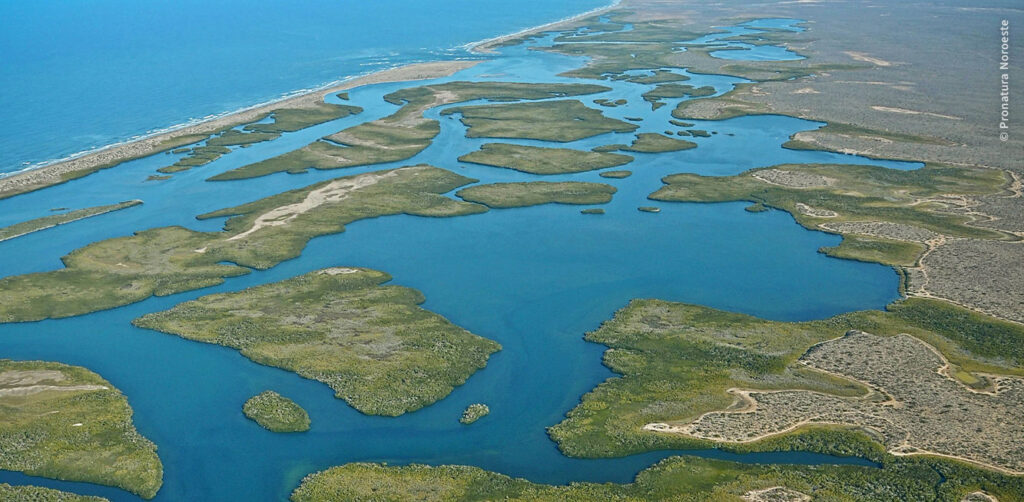It was 1997, at the dawn of our organization, when we were certain that the Magdalena Bay lagoon complex was one of the natural sites that deserved environmental protection in northwestern Mexico. It’s undeniable ecological richness, biodiversity and unique ecosystem characteristics made us realize that this expanse of wetlands should be shielded from invasive factors such as urban growth, commercial development and mining extraction.
One of the obvious signs of Magdalena Bay’s vulnerable state is that it is one of the sanctuaries that the Gray Whale (Eschrichtius robustus) chooses to have its young, along with Ojo de Liebre Lagoon and San Ignacio Lagoon. Every spring, this ocean giant travels from the Arctic some 10,000 kilometers to the warm waters of the Mexican Pacific. Undoubtedly, tourism and commercial development would put this and many other species at imminent risk.
On the other hand, Magdalena Bay has the largest wetland complex and mangrove forest on the entire peninsula. This makes this area a priority region for conservation, since Mexican law does not consider it a Natural Protected Area (NPA).

After intense negotiations and the search for legal alternatives to protect these lands, in August 2022 we finally formalized the biological reserve of 3,074 hectares of ejido parcels, located north of Magdalena Bay. This reserve for conservation purposes is a momentous event, as it is one of the largest transactions of its kind in the history of environmental work in Latin America. As a result, these lands and all the life they contain will have legal protection and the work of our conservation experts. The reserved land in Magdalena Bay joins 12 other adjoining parcels, for a total of 4,782 hectares that we protect as Pronatura Noroeste in this area.
Legal protection is one of our permanent strategies, as we have 133 legal tools for land protection, depending on the condition and characteristics of each property, such as conservation contracts, areas voluntarily set aside for conservation (ADVC), federal zone concessions, ecological easements and Management Units (UMA). In fact, as Pronatura Noroeste we have more than 265,000 hectares protected under some legal scheme, which makes us the civil organization with the most land protected for conservation in Mexico.

The abundance of wetlands in Magdalena Bay is the habitat to a large number of migratory birds, such as the Collared Goose (Branta bernicla), the White-fronted Woodpecker (Limosa fedoa), the Brown Pelican (Pelecanus occidentalis), the Long-billed Curlew (Numenius americanus) and the Western Sandpiper (Calidris mauri). Birds of prey can also be found, such as the Black-eared Hawk (Parabuteo unicinctus), the Peregrine Falcon (Falco peregrinus) and the Great Horned Owl (Bubo virginianus). One case that motivates us to intensify conservation efforts in these lands is the presence of a Bald Eagle (Haliaeetus leucocephalus) nest. This bird, perhaps the most representative of the U.S., has some presence in northern Mexico, but has never before been seen so far south.
Some reptiles that inhabit this area are the Baja California Rattlesnake (Crotalus enyo), the Red Diamond Rattlesnake (Crotalus ruber) and the Banded Sand Snake (Chilomeniscus stramenius), as well as the Desert Spiny Lizard (Sceloporus zosteromus) and the Common Lizard (Uta stansburiana). Among the mammals we can mention the Juancito (Ammospermophilus leucurus extimus), the Merriam’s Kangaroo Rat (Dipodomys merriami) and the Dulzura’s Kangaroo Rat (Dipodomys simulans).
Now that this huge expanse of coastal ecosystem will be permanently protected, we invite you to join in the conservation efforts.













